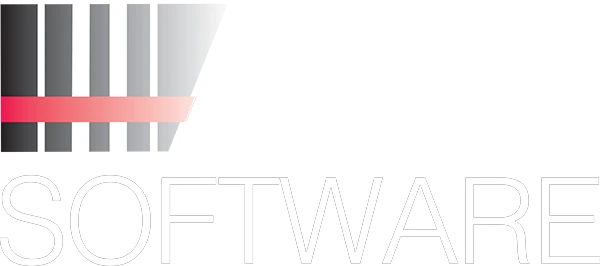If you’re running a manufacturing business, then you need to be using material requirements planning (MRP) software. MRP is a vital part of any successful production operation, and it can help you save time and money while improving your bottom line. In this guide, we will discuss what MRP is, why it’s important, and the benefits of using MRP software in your business. We’ll also take a look at the steps involved in the MRP process so that you can get started using MRP in your own organization.
What is Material Requirements Planning?
So, what exactly is MRP? Material requirements planning, also called materials requirement planning, is a software-based manufacturing planning and control system that helps businesses manage the production of their products. It does this by taking into account the raw materials required to make a product, as well as the production schedule. This information is then used to generate purchase orders for the necessary materials, and to create production plans that ensure that the finished product is delivered on time.
How Does MRP Planning Work?
The MRP process consists of four main steps:
Estimating Demand
The first step in the MRP process is to estimate demand. This involves forecasting future sales, and determining how much of each product will need to be produced to meet demand.
Checking Inventory
The next step is to check inventory levels and determine whether there are enough raw materials on hand to meet demand. This should include inventory on hand, location, items in transit, and whether items are already allocated.
Creating the Master Production Schedule
Once the demand has been estimated and the inventory checked, the next step is to create a master production schedule. This schedule outlines when each product is scheduled to be produced and takes into account the lead time for each of the materials.
Monitoring and Controlling the Process
Monitoring and controlling the MRP process is essential to ensure that everything is running smoothly. This involves tracking the progress of purchase orders and making sure that materials are delivered on time. It also involves monitoring the production operation to ensure that everything is on track, making adjustments as necessary.
Material Requirement Planning in Manufacturing
MRP software is essential for an efficient manufacturing process. By taking into account the raw materials required to make a product, as well as the production schedule, MRP software can help manufacturing companies save time and money.
In addition, material planning can help businesses improve their bottom line by ensuring that products are delivered on time and that inventory levels are kept under control. If you’re running a manufacturing business, an MRP system is an essential tool that you need to be using to manage your manufacturing process.
Key Elements of Material Requirements Planning
MRP Inputs
There are a few key elements that you’ll need to consider when creating an MRP plan. These elements include:
-
- Master Production Schedule (MPS): This schedule considers all outstanding work orders and plans labor, machinery usage, and workstations appropriately.
-
- Inventory Status File (ISF): This file includes information on all raw materials, finished goods, and work-in-progress inventory.
-
- The Bill of Materials (BOMs): This lists the materials, components, and sub-assemblies required to produce each product and is needed to accurately forecast supply planning.
MRP Outputs
The MRP process generates a number of outputs that can be used to improve your operations management. These outputs include:
-
- Purchase Orders: These orders are generated for the raw materials required to produce a product.
-
- Production Plans: These plans outline the steps required to produce a product.
-
- Inventory Reports: These reports show the quantities of each material that are available.
Why an MRP System is Important: Advantages
There are a number of benefits that can be gained by implementing MRP software in your business including:
-
- Improved Inventory Management: One of the biggest benefits of having an MRP system is improvements in managing inventory. By taking into account the materials required to produce a product, as well as the production schedule, MRP can help you avoid overstocking or running out of materials.
-
- Better Production Planning: Another benefit of MRP is better production planning. By taking into account the lead time for each material, as well as the demand for each product, MRP can help you plan your production more efficiently.
-
- Reduced Production Costs: MRP can also help you reduce your production costs. By avoiding overstocking or running out of raw materials, you can avoid the need to rush orders or expedite shipping. Additionally, by better planning your production, you can avoid unnecessary downtime and optimize your use of resources.
- Improved Customer Satisfaction: Finally, a material planning process can help you improve customer satisfaction. By ensuring that your products are delivered on time, you can avoid the frustration and inconvenience that comes with late deliveries.
Ready to Optimize Your Production Process and Drive Efficiency?
Connect with our team today and discover how our comprehensive material requirements planning solution can transform your business. Let’s craft a strategy that aligns with your goals and addresses your specific challenges. Contact us now to start your journey towards operational excellence.
Optimize ProductionMRP System Disadvantages
There are a few potential disadvantages of MRP including:
-
- Complicated to Set Up: MRP can be complicated to set up, especially if you have a large and complex production process.
-
- Requires Accurate Information: In order for MRP to be effective, you’ll need to have accurate information about your production process. This information can be difficult to obtain, especially if you have a large and complex production process.
Despite these disadvantages, MRP is still a valuable tool that can be used to improve your production process.
Implementing MRP Software in Your Business
MRP is a computerized system that uses information from your production process to generate a plan for production. If you’re interested in implementing MRP software in your business, there are a few things you should keep in mind:
-
- First, you’ll need to choose the right software for your business. There are a number of MRP software packages on the market, so it’s important to choose one that will meet your specific needs.
-
- Second, you’ll need to implement the software in your business. This implementation can be complex, so it’s important to work with the right provider who can help you through the process.
-
- Finally, you’ll need to train your employees on how to use the software. This training will ensure that your employees are able to properly utilize the software, and it will help them understand the MRP process.
By following these steps, you can ensure that you choose the right MRP software for your business and that you’re able to properly implement it.
ASC Software: Material Requirements Planning (MRP) with ASCTrac®
ASCTrac® is a powerful MRP software that can help you optimize your operations management and production process. ASCTrac® includes all of the features you need to generate an MRP plan, including:
-
- The ability to create a master production schedule.
-
- The ability to create a bill of materials.
-
- The ability to generate purchase orders.
-
- The ability to monitor production progress.
To learn more about ASCTrac®, explore our website or contact us today. We’ll be happy to answer any of your questions.
Conclusion
Material requirements planning (MRP) is a valuable tool that can be used to improve your production process. If you have accurate information about your production process and you’re willing to invest the time and effort into setting up MRP, you can use MRP to deliver your products on time and improve customer satisfaction.
Get in touch with us to find out how ASC software can start improving your business today.
More Information:
History of MRP Systems
The first computerized MRP systems were developed in the early 1950s and ‘60s as a way to manage inventory for large manufacturing companies. These early MRP systems were complex and difficult to use, which limited their adoption. In the 1970s, advances in computer technology led to the development of more user-friendly MRP systems. These newer MRP systems were more widely adopted and continued to evolve into the systems used today.
MRP vs. ERP
MRP and ERP are often confused, but there are a few key differences between these two systems. MRP is a production and inventory management system that is used to generate purchase orders and production plans. ERP is a business management system that includes modules for accounting, CRM, and supply chain management.
While both systems can be used to improve your production process, MRP is focused on production planning, while ERP is focused on business management.
How Do You Make a Material Requirement Plan?
There are a few steps you’ll need to follow to create a material requirement plan:
-
- Identify the products you want to produce.
-
- Determine the materials needed to produce each product.
-
- Create a production schedule.
-
- Monitor your inventory levels and place purchase orders when necessary.
What Are the Four Steps of Materials Requirement Planning?
The four basic steps of MRP are:
-
- Estimate demand
-
- Check inventory
-
- Generate a master production schedule
-
- Monitor the process and make improvements as needed
What is the Goal of Material Requirements Planning?
The goal of MRP systems is to optimize the production process and deliver products on time. By monitoring inventory levels and creating a production schedule, MRP can help you avoid production bottlenecks and deliver your products on time.
MRP and BOM
MRP is a system for planning the inventory and production of a company. The MRP system includes all of the information necessary to plan the production of a product.
Whereas, BOM (Bill of Materials) is a list of all the raw materials required to produce a product. The BOM includes information such as the quantity of each material needed, the part number of each material, and the supplier of each material.
MRP and Inventory Management
Inventory management is a key part of a material requirements planning system. By practicing inventory control and monitoring stock levels and placing purchase orders when necessary, you can avoid production bottlenecks and keep your production process running smoothly.
MRP and Supply Chain
MRP refers to creating material requirements plans and production schedules based on supply chain lead times. These lead times are the amount of time it takes for a supplier to deliver materials to your company.
By taking lead times into account, you can create a production schedule that minimizes disruptions and maximizes efficiency.
Independent Demand vs. Dependent Demand
In MRP systems, there are two types of demand:
-
- Independent demand is the customer demand for a finished product. This type of demand is not affected by the production of other products.
-
- Dependent demand is the demand for a raw material or component that is needed to produce a finished product. This type of demand is based on the production schedule of the finished product.
For example, if you are producing a table, the demand for wood would be considered dependent demand. The demand for tables would be called independent demand.





